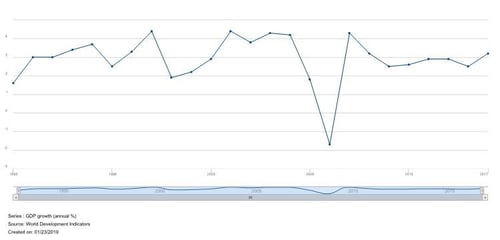 In a previous life, I was involved in real estate, including properties catering to the growing older population. Those properties were divided into three main categories: active adult communities, aimed at the vigorous, relatively young retirees; assisted living communities, aimed at those who wanted some extra help; and skilled nursing facilities, aimed at those who needed full-time care. Respectively, they were known in the industry as the go-gos, the slow-gos, and the no-gos.
In a previous life, I was involved in real estate, including properties catering to the growing older population. Those properties were divided into three main categories: active adult communities, aimed at the vigorous, relatively young retirees; assisted living communities, aimed at those who wanted some extra help; and skilled nursing facilities, aimed at those who needed full-time care. Respectively, they were known in the industry as the go-gos, the slow-gos, and the no-gos.
Apart from being a fairly good description of the target markets (as well as a bit insensitive, sorry), these terms can be used to describe where the global economy sits today. We have the go-go economies, principally China but also, more recently, the U.S.; the slow-gos, notably in Europe; and the no-gos, notably Japan. Nonetheless, in the past year or so, the world as a whole has been in go-go territory, albeit at the low end.
Headed for no-go?
When we look at the recent news of declining growth in China, continued weakness in Europe, and the potential effects of the government shutdown here in the U.S., you might expect that we are headed straight for no-go territory. That was certainly what U.S. financial markets seemed to be saying yesterday. In fact, while we might edge down into slow-go, no-go still looks to be some ways off.
The International Monetary Fund’s (IMF’s) recent downgrade of its global growth forecast kicked off the most recent round of worry. It took that forecast down to 3.5 percent, with 2020 estimated at 3.6 percent. This number is not great. Historically, however, it is still pretty good. In fact, it is about the highest level since 2011, as you can see in the chart below.

Source: World Development Indicators (as of January 23, 2019)
Given this history and the IMF’s projections, we would clearly be in the go-go phase for the next two years. Even a more severe slowdown would likely take us down to only slow-go. If that were the case, it would not mean the end of the world, as it would return us to the growth levels that have prevailed through most of the recovery so far. If we have to go back to the growth levels of 2011–2016, it would be a slowdown, but we would still be growing.
Assessing the risks
That said, there are real downside risks here. China in particular is showing signs of weakness, while Europe is facing the usual array of political challenges. Here in the U.S., the government shutdown is damaging the economy, and there are even bigger challenges in the next couple of months.
Taking those risks into account, however, there are two things to remember. First, many of these results are due to politics—the trade war, Brexit, and so forth. Therefore, they may well be resolved in a less damaging way than markets now expect. Politics doesn’t have to turn into rainbows. But if the clouds get a bit less dark, that could have a significant positive effect. Second, even with a lot of damage, things would still look acceptably good.
A slow move forward
So, are we going to take off sprinting? Not likely. But equally unlikely is that the global economy is going to retire to bed rest in the next several quarters. The most likely outcome is that we will continue to move forward—more slowly than most would like but forward nonetheless.
Overall, based on the current data, no-go is, well, a no go. But expect a go-go, and be on the lookout for a slow-go.


 Print
Print

